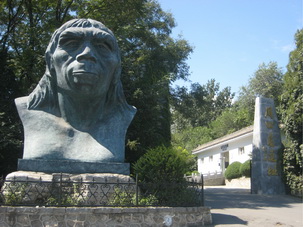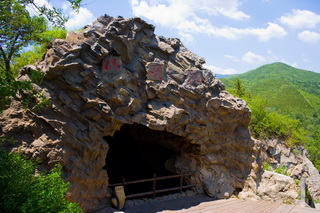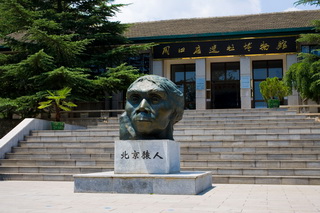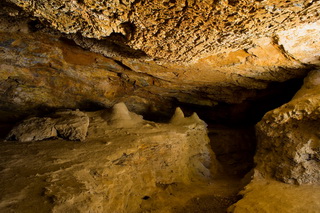
 China Tours
China Tours Tibet Tours
Tibet Tours China Theme Tours
China Theme Tours Off The Beaten Track
Off The Beaten Track Yangtze Cruises
Yangtze Cruises China Trip Planner
China Trip Planner Travel Agents
Travel Agents


We had a wonderful time in Tibet. We have learned a lot about this unique destination because of the wonderful guide Degyi who is so knowledge and always available towards our tours. We stayed at the Shangri-La Hotel Lhasa, and we would never imagine a Tibet travel could be so nice and amazing without the help of Degyi.
Also, thanks a lot to our Tibetan driver Mr.Wongdun for his safe driving and a good sense of service along the way.
We shall return Tibet in the near future!
P.B. and A. A - Europe
Tibet Travel
June 2018 (Private Tibet Journey from Kathmandu)

 Zhoukoudian, about 50 kilometers (31 miles) southwest of Beijing, was a natural habitat of human ancestors about 700,000 years ago. Here multiplied descendents, from age to age, created the splendid Paleolithic Age. To some extent, this is the cradle of Chinese civilization. In this charming and mystical land, Peking man left its footprints. Today, the remains and site provides a good opportunity for tourists to explore the primitive life of our human ancestors.
Zhoukoudian, about 50 kilometers (31 miles) southwest of Beijing, was a natural habitat of human ancestors about 700,000 years ago. Here multiplied descendents, from age to age, created the splendid Paleolithic Age. To some extent, this is the cradle of Chinese civilization. In this charming and mystical land, Peking man left its footprints. Today, the remains and site provides a good opportunity for tourists to explore the primitive life of our human ancestors.The Peking Man Site is situated in the Dragon Bone Hill near Zhoukoudian. Since 1921, eight sites of ancient human remains have been discovered. 26 localities where high concentrations of fossils were found have been excavated. 118 kinds of animal fossils and over 100,000 stone wares have been unearthed. These fossils and remains serve as evidence of the existence of humanoid species 500,000 years ago in Zhoukoudian.
 Peking Man is now considered to belong to the broader genus called Homo erectus (erect humanoid), making Peking Man a Homo erectus pekinensis. Peking Man shared this missing-link role with two other specimens Java Man, found in 1891 on the island of East Java in Indonesia, another Homo erectus with the more specific name of Pithecanthropus erectus (upright ape-man), erectus being the genus proper; and Taung Child (Australopithecus africanus), found in 1924 at Taung near the city of Kimberley, in South Africa.
Peking Man is now considered to belong to the broader genus called Homo erectus (erect humanoid), making Peking Man a Homo erectus pekinensis. Peking Man shared this missing-link role with two other specimens Java Man, found in 1891 on the island of East Java in Indonesia, another Homo erectus with the more specific name of Pithecanthropus erectus (upright ape-man), erectus being the genus proper; and Taung Child (Australopithecus africanus), found in 1924 at Taung near the city of Kimberley, in South Africa.
Whereas the scientific community was somewhat skeptical of the Java Man finds and their documentation, it unreservedly accepted the scientific value of the Peking Man finds, especially since the excavations during 1923-1927 unearthed more evidence, including more teeth, a lower jaw, and skull fragments. Moreover, during a second set of excavations that took place under the supervision of the Chinese paleontologist, Yang Zhongjian (aka Dr. C.C. Young in Anglo-Saxon circles, and generally renowned as the 'Father of Chinese Vertebrate Paleontology'), and which took place from 1928 until they were abruptly interrupted by invading Japanese forces in 1937, over 200 human fossils from more than 40 individual specimens, including 6 near-complete calottes, or skullcaps, were excavated from the site.
Besides the finds of humanoid fossils, the scientists excavated a number of artifacts  belonging to humanoid habitation such as primitive, hand-held tools - or tools lacking handles - such as stone flakes (for cutting) and stone chopping tools, where the latter is to be understood as a special stone (in the Zhoukoudian area, either quartz or green sandstone) that has had clumps, or flakes, removed from both sides of one end of the stone by means of striking the stone at an angle with another similarly hard stone, the result being a primitive tool, with a simple cutting edge, that can be gripped in one hand. Another indicator of humanoid habitation at Zhoukoudian was the presence of layers of cinders that included the remains of charred animal bones, suggesting that animal meat had been cooked here over open fire.
belonging to humanoid habitation such as primitive, hand-held tools - or tools lacking handles - such as stone flakes (for cutting) and stone chopping tools, where the latter is to be understood as a special stone (in the Zhoukoudian area, either quartz or green sandstone) that has had clumps, or flakes, removed from both sides of one end of the stone by means of striking the stone at an angle with another similarly hard stone, the result being a primitive tool, with a simple cutting edge, that can be gripped in one hand. Another indicator of humanoid habitation at Zhoukoudian was the presence of layers of cinders that included the remains of charred animal bones, suggesting that animal meat had been cooked here over open fire.
Unfortunately the bulk of the finds at Zhoukoudian were lost forever, including 5 of the 6 calottes. The German anthropologist, Franz Weidenreich, the then director of the Cenozoic Research Laboratory of the Peking Union Medical College that had been set up by the Canadian paleoanthropologist and leader of the first set of Zhoukoudian finds, Davidson Black, precisely to analyze the Zhoukoudian finds so as to properly date and document their origin, had fortunately had the foresight to cast copies of all of the calottes, such that all was not lost when the Zhoukoudian finds went missing.
 The Peking Man find sparked a lively debate in the scientific community regarding the birthplace, as it were, of humanoid life. The widespread belief had theretofore been that humanoid life had emerged in Africa, and from there had spread to other parts of the world. The find of Homo erectus pekinensis suddenly divided paleontologists into two camps those who continued to maintain that humanoid life had arisen in Africa (specifically in East Africa), and those who now believed that humanoid life had arisen in Asia - specifically, in China. That debate remains unresolved.
The Peking Man find sparked a lively debate in the scientific community regarding the birthplace, as it were, of humanoid life. The widespread belief had theretofore been that humanoid life had emerged in Africa, and from there had spread to other parts of the world. The find of Homo erectus pekinensis suddenly divided paleontologists into two camps those who continued to maintain that humanoid life had arisen in Africa (specifically in East Africa), and those who now believed that humanoid life had arisen in Asia - specifically, in China. That debate remains unresolved.
China Trip Planner | Travel Agents | About Us | Why Us | Contact Us | How to Pay | How to Book - Terms & Conditions | Site Map
Copyright © 2010 - 2030 All Rights Reserved.


 0086-28-85711328
0086-28-85711328 0086-28-85546015
0086-28-85546015



